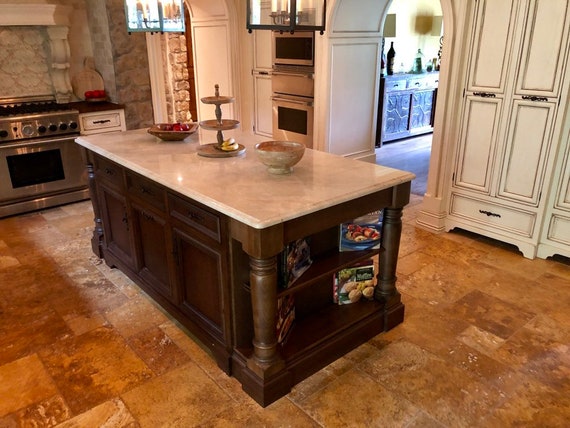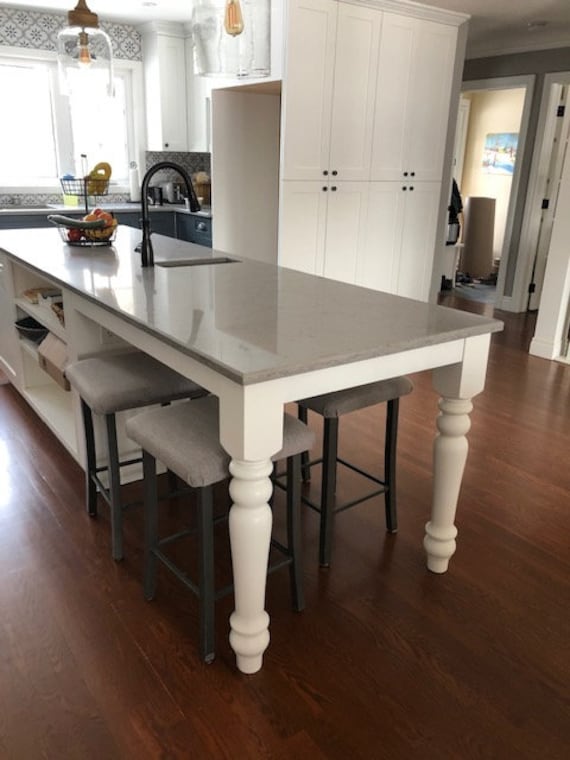A Comprehensive Guide to Selecting the Right Kitchen Island Leg
A Comprehensive Guide to Selecting the Right Kitchen Island Leg
Blog Article
Discovering the Crucial Functions of a Kitchen Island Leg for Your Culinary Area
The cooking area island offers as a central hub in any type of culinary room, and the choice of leg layout is critical in boosting both its performance and visual allure. Recognizing the crucial functions of cooking area island legs-- including material choices, style styles, and security elements-- can substantially influence the general experience within the kitchen area.
Significance of Cooking Area Island Legs
Cooking area island legs play an important duty in both the performance and aesthetics of a cooking area room. They not only support the weight of the island but likewise improve the overall style, adding to the cooking area's aesthetic allure. The choice of legs can determine the style of the kitchen, be it modern, traditional, or rustic.
Functionally, robust and appropriately designed legs make certain security, permitting for the risk-free use of the island for different jobs such as food preparation, eating, or entertaining. Solid legs stop wobbling and shifting, supplying a trustworthy surface for everyday tasks.
In addition, the elevation and positioning of the legs can influence the comfort degree for those seated at the island. A well-considered elevation can suit bar stools or chairs, advertising an inviting atmosphere for celebrations.
In addition to these functional factors to consider, cooking area island legs can offer as a focal factor in the room (kitchen island leg). Attractive or distinctively designed legs can boost the design visual, making the island a focal point. Thus, picking the ideal kitchen area island legs is vital for stabilizing form and function in any cooking area
Material Options for Legs
Choosing the ideal product for cooking area island legs substantially affects both toughness and design. Common product options include stone, wood, and metal, each offering unique benefits.
Wood is a popular selection as a result of its heat and versatility. It can be quickly customized to match various decor designs, from rustic to contemporary. Woods like oak and maple supply outstanding stamina and durability, while softer woods can be a lot more prone to tear and put on.
Metal legs are preferred for their smooth, modern aesthetic. kitchen island leg. Stainless-steel and light weight aluminum are not only durable but likewise resistant to corrosion and rust, making them excellent for kitchen area environments. They can produce a commercial look and are typically available in various surfaces to enhance various other kitchen area components
Rock legs, such as granite or marble, add an element of high-end and stability. While heavier than other products, they use outstanding sturdiness and can endure substantial weight. However, they might require additional assistance to guarantee correct balance.
Eventually, the selection of material should line up with both functional needs and the overall style vision of the kitchen area, making sure that the island legs boost both energy and aesthetic appeals.
Style Designs to Consider
What layout styles should be taken into consideration when picking legs for a cooking area island? The choice of leg style significantly influences the total aesthetic of your cooking space. For a modern kitchen area, streamlined and minimalistic leg designs, such as stainless steel or geometric shapes, can boost the contemporary allure, supplying a clean and uncluttered look.
On the other hand, typical kitchens profit from timeless styles such as turned or sculpted wooden legs, which add warmth and personality. These choices usually feature detailed details that enhance vintage home furnishings. For a rustic setting, think about legs made from redeemed wood or functioned iron, which bring a natural, earthy quality to the area.
If you lean towards an industrial style, robust metal legs with a troubled surface might be suitable, providing an edgy yet sophisticated touch. Additionally, farmhouse style cooking areas can integrate beefy legs that stimulate a sense of durability and homeliness.

Elevation and Stability Factors
The height and security of a kitchen island are critical components that straight affect its capability and individual experience. A suitable kitchen area island leg should give adequate elevation to fit a site range of tasks, from food prep work to casual dining.
Stability is equally important, specifically as cooking area islands frequently serve as focal points in culinary atmospheres. A steady leg style lessens wobbling and shifting, which can bring about crashes or pain throughout use. Materials such as solid wood, steel, or a mix thereof are commonly employed to attain the essential toughness. In addition, the leg's add-on to the island's base need to be safe, making sure durability and resilience versus the damage of everyday use.
Customization and Devices
Customization alternatives and accessories for cooking area island legs can substantially enhance both the visual appeal and capability of the space. Homeowners can choose from a selection of materials, consisting of steel, timber, and rock, enabling smooth combination with existing kitchen style. The choice of coating-- be it a natural discolor, repaint, or powder covering-- more personalizes the look, ensuring that the island matches the total layout theme.
In article enhancement to product and finish, house owners might also explore the consolidation of devices such as decorative brackets, adjustable feet, or integrated shelving. Braces can supply added support while adding to a rustic or modern-day aesthetic. Adjustable feet are especially helpful for irregular flooring, guaranteeing the island stays stable and level, which is important for both safety and security and usability.

Verdict
In conclusion, kitchen area island legs offer an important function in giving stability and improving the general visual of the cooking space. The choice of products and layout styles adds to both functionality and visual charm, while factors to consider of elevation and security ensure practical use. Personalization alternatives and devices can boost the cooking area island, making it a distinct focal factor within the home. Hence, careful consideration of these functions is necessary for a reliable cooking area layout.
The kitchen area island serves as a central center in any kind of cooking area, and the option of leg design is pivotal in boosting both its capability and visual appeal. Recognizing the necessary functions of kitchen area island legs-- including product choices, style styles, and stability variables-- can dramatically affect the overall experience within the kitchen.Cooking area island legs play a vital function in both the functionality and visual appeals of a cooking area room.What layout styles should be thought about when choosing legs for a cooking area island?In final thought, kitchen island legs offer a vital role in giving stability and boosting the general visual of the culinary room.
Report this page